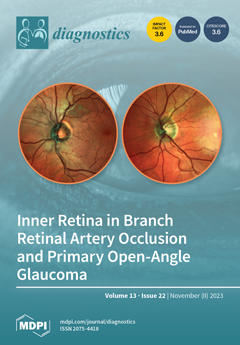This study focuses on developing accurate immunoassays for diagnosing Chagas disease (CD), a challenging task due to antigenic similarities between
Trypanosoma cruzi and other parasites, leading to cross-reactivity. To address this challenge, chimeric recombinant
T. cruzi antigens (IBMP-8.1, IBMP-8.2, IBMP-8.3, and IBMP-8.4) were
[...] Read more.
This study focuses on developing accurate immunoassays for diagnosing Chagas disease (CD), a challenging task due to antigenic similarities between
Trypanosoma cruzi and other parasites, leading to cross-reactivity. To address this challenge, chimeric recombinant
T. cruzi antigens (IBMP-8.1, IBMP-8.2, IBMP-8.3, and IBMP-8.4) were synthesized to enhance specificity and reduce cross-reactivity in tests. While these antigens showed minimal cross-reactivity with leishmaniasis, their performance with other trypanosomatid infections was unclear. This study aimed to assess the diagnostic potential of these IBMP antigens for detecting CD in patients with
Crithidia sp. LVH-60A, a parasite linked to visceral leishmaniasis-like symptoms in Brazil. This study involved seven
Crithidia sp. LVH-60A patients and three
Leishmania infantum patients. The results indicated that these IBMP antigens displayed 100% sensitivity, with specificity ranging from 87.5% to 100%, and accuracy values between 90% and 100%. No cross-reactivity was observed with
Crithidia sp. LVH-60A, and only one
L. infantum-positive sample showed limited cross-reactivity with IBMP-8.1. This study suggests that IBMP antigens offer promising diagnostic performance, with minimal cross-reactivity in regions where
T. cruzi and other trypanosomatids are prevalent. However, further research with a larger number of
Crithidia sp. LVH-60A-positive samples is needed to comprehensively evaluate antigen cross-reactivity.
Full article


